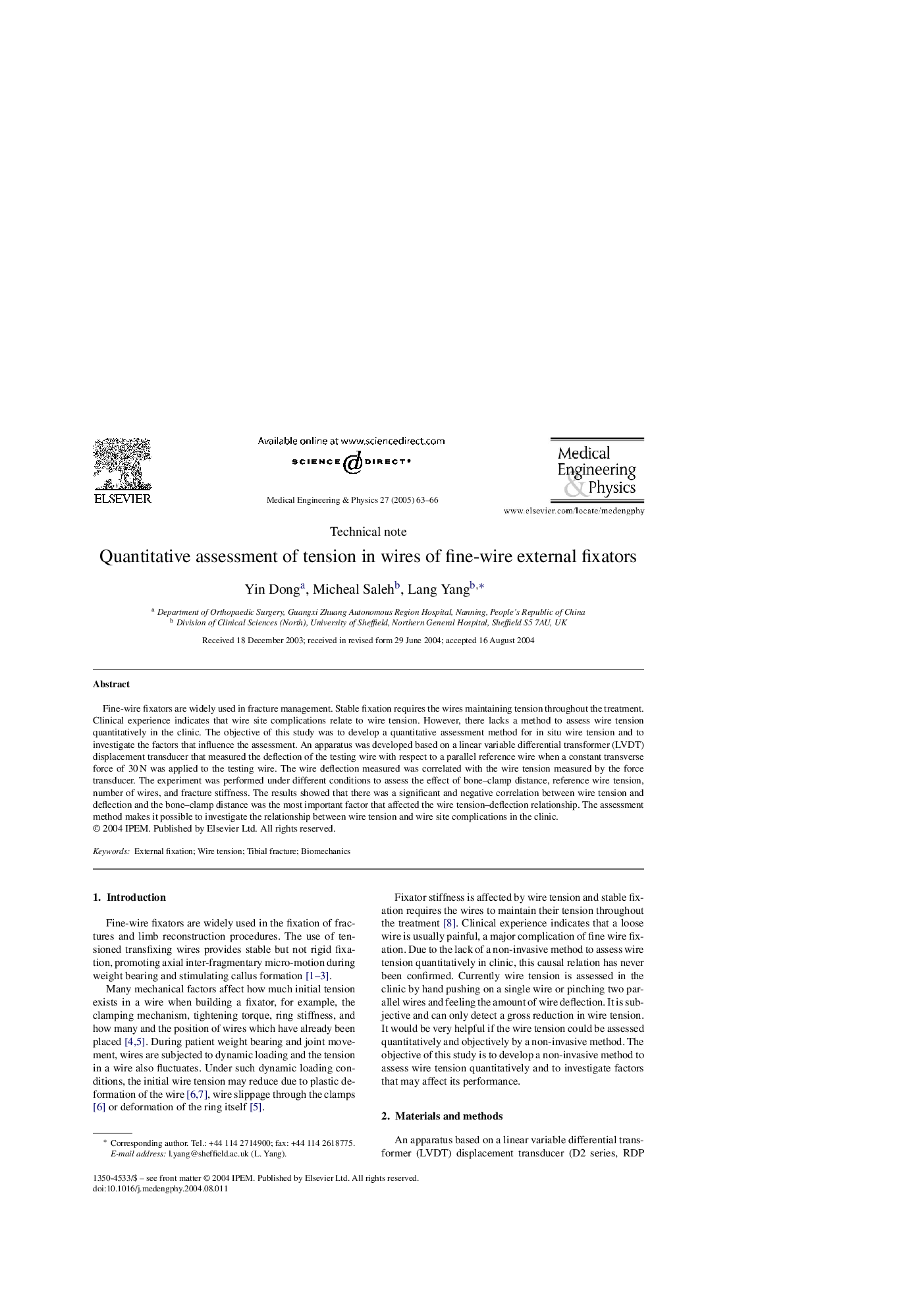| Article ID | Journal | Published Year | Pages | File Type |
|---|---|---|---|---|
| 10435155 | Medical Engineering & Physics | 2005 | 4 Pages |
Abstract
Fine-wire fixators are widely used in fracture management. Stable fixation requires the wires maintaining tension throughout the treatment. Clinical experience indicates that wire site complications relate to wire tension. However, there lacks a method to assess wire tension quantitatively in the clinic. The objective of this study was to develop a quantitative assessment method for in situ wire tension and to investigate the factors that influence the assessment. An apparatus was developed based on a linear variable differential transformer (LVDT) displacement transducer that measured the deflection of the testing wire with respect to a parallel reference wire when a constant transverse force of 30Â N was applied to the testing wire. The wire deflection measured was correlated with the wire tension measured by the force transducer. The experiment was performed under different conditions to assess the effect of bone-clamp distance, reference wire tension, number of wires, and fracture stiffness. The results showed that there was a significant and negative correlation between wire tension and deflection and the bone-clamp distance was the most important factor that affected the wire tension-deflection relationship. The assessment method makes it possible to investigate the relationship between wire tension and wire site complications in the clinic.
Related Topics
Physical Sciences and Engineering
Engineering
Biomedical Engineering
Authors
Yin Dong, Micheal Saleh, Lang Yang,
